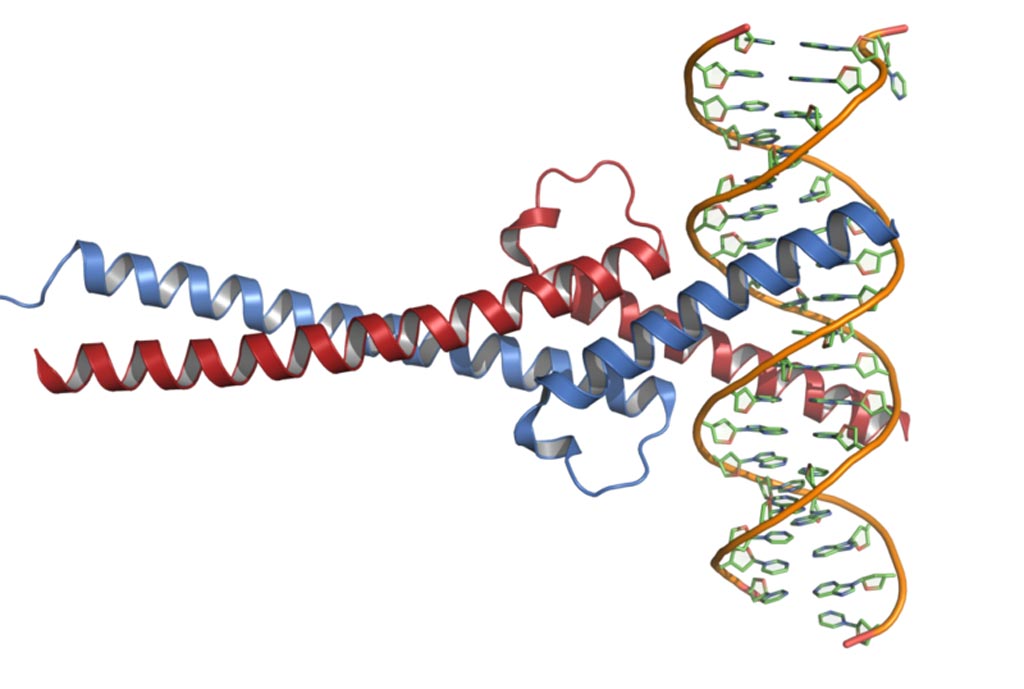Novel Dual-Action Drug Blocks Carcinogenic MYC Oncogene Activity
By LabMedica International staff writers
Posted on 14 Feb 2017
A novel dual-action, low molecular weight drug suppresses the effects of the MYC cancer gene by blocking the action of two key regulatory proteins.Posted on 14 Feb 2017
MYC is a regulator gene that codes for a transcription factor. The protein encoded by this gene (Myc) is a multifunctional, nuclear phosphoprotein that plays a role in cell cycle progression, apoptosis, and cellular transformation. A mutated version of MYC is found in many cancers, which causes Myc to be continually expressed. This leads to the unregulated expression of many genes, some of which are involved in cell proliferation, and results in the formation of cancer. Despite the recognition of the role of MYC in cancer, it has proven to very difficult to develop drugs to regulate its activity.

Image: The crystal structure of the Myc protein in complex with DNA (Photo courtesy of Wikimedia Commons).
In this regard, investigators at the University of California, San Diego and collaborators at the University of Colorado School of Medicine, and the biopharmaceutical company SignalRx developed a novel dual-action inhibitor that blocks the activity of two key MYC-mediating factors, Phosphoinositide 3-kinase (PI3K) and Bromodomain-containing protein 4 (BRD4).
The investigators reported in the January 30, 2017, online edition of the journal Proceedings of the [U.S.] National Academy of Science that they had used molecular modeling crystal structure and nuclear magnetic resonance imaging, to design a new low molecular weight drug (SF2523) that simultaneously disrupted the two key MYC-mediating factors PI3K and BRD4.
Working with cell culture and mouse models, the investigators showed that the simultaeous inhibition of PI3K and BRD4 blocked MYC expression and activation, promoted MYC degradation, and markedly inhibited cancer cell growth and metastasis.
"Most anti-cancer drugs have a single target. They try to do one thing, such as block a single receptor or signaling pathway," said contributing author Dr. Donald L. Durden, professor of pediatrics at the University of California, San Diego. "This paper is proof-of-concept of a completely different mode of drug discovery clearly separated from the standard practice of one drug, one target. This is a "'first in class" approach to achieve a maximum inhibition of MYC in the treatment of the multitude of cancers known to be driven by the MYC oncogene. These findings suggest that dual-activity inhibitors are a highly promising lead compound for developing new anticancer therapeutics."













